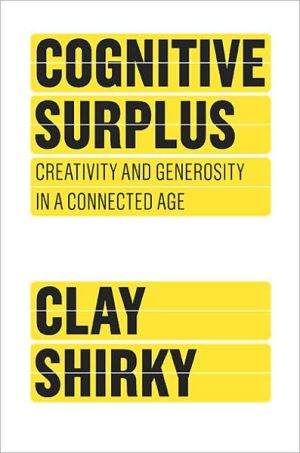Media Virus!
The most virulent viruses today are composed of information. In this information-driven age, the easiest way to manipulate the culture is through the media. A hip and caustically humorous McLuhan for the '90s, culture watcher Douglas Rushkoff now offers a fascinating expose of media manipulation in today's age of instant information.\ \ \ The most virulent viruses today are composed of information. In this information-driven age, the easiest way to manipulate the...
Search in google:
The most virulent viruses today are composed of information. In this information-driven age, the easiest way to manipulate the culture is through the media. A hip and caustically humorous McLuhan for the '90s, culture watcher Douglas Rushkoff now offers a fascinating expose of media manipulation in today's age of instant information. Publishers Weekly This provocative title suggests the author will follow the familiar route of explaining how popular culture manipulates its audience into complacency. On the contrary, Rushkoff (The GenX Reader) asserts that media ``viruses'' empower audiences both to become more actively engaged with the media and to challenge the status quo. Viruses, e.g., rap song ``Cop Killer'' and the videotape of the Rodney King beating, are controversial, compelling images or ideas that allow countercultural politics to infiltrate mainstream media. The hidden agendas Rushkoff explores here are thus subversive ones. His readings of various media outlets, such as TV shows like The Simpsons and Ren and Stimpy, as launchpads for antiestablishment messages about alternative lifestyles, are smart and interesting. But his conclusions about the revolutionary potential of media viruses are not always substantiated by his analyses, and his use of techno-jargon makes his arguments often difficult to follow. Author tour. (Oct.)
PrefaceAcknowledgmentsIntroduction: The Nature of Infection3Pt. 1On Getting Cultured17Ch. 1The Datasphere19Pt. 2The Mainstream43Ch. 2TV Forums45Ch. 3Presidential Campaigning67Ch. 4Kids' TV100Ch. 5The MTV Revolution126Pt. 3The Underground177Ch. 6Alternative Media179Ch. 7Tactical Media210Ch. 8The Net235Ch. 9Pranks258Ch. 10Meta-media286Afterword317Notes323Bibliography329Index333
\ Publishers Weekly - Publisher's Weekly\ This provocative title suggests the author will follow the familiar route of explaining how popular culture manipulates its audience into complacency. On the contrary, Rushkoff (The GenX Reader) asserts that media ``viruses'' empower audiences both to become more actively engaged with the media and to challenge the status quo. Viruses, e.g., rap song ``Cop Killer'' and the videotape of the Rodney King beating, are controversial, compelling images or ideas that allow countercultural politics to infiltrate mainstream media. The hidden agendas Rushkoff explores here are thus subversive ones. His readings of various media outlets, such as TV shows like The Simpsons and Ren and Stimpy, as launchpads for antiestablishment messages about alternative lifestyles, are smart and interesting. But his conclusions about the revolutionary potential of media viruses are not always substantiated by his analyses, and his use of techno-jargon makes his arguments often difficult to follow. Author tour. (Oct.)\ \ \ \ \ Library JournalIn our "datasphere" world, we are exposed to information about events like the O.J. Simpson case in myriad formats from newspapers, television tabloids, and talk shows to the Internet. This media world, according to critic Rushkoff (The Genx Reader, Ballantine, 1994), is the next and only frontier. He argues that the media operate in society as a virus causing permanent and real social change. While his excessive use of viral-related concepts gets tiresome, the thesis that the popular media manipulate American culture is provocative and well argued. In Rushkoff's view, the media world is not monolithic, and its power can be harnessed to serve a variety of purposes. To illustrate his point, he examines a range of media activities, from mainstream offerings, such as children's television with it subtle, subversive messages, to the tactical strategies employed by "camcorder kamikazes" documenting alternative versions of reality. This timely book should be of interest to a wide range of readers.-Judy Solberg, Univ. of Maryland Libs., College Park\ \








